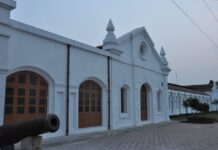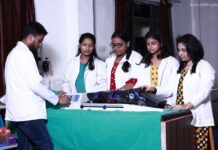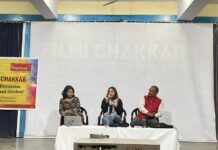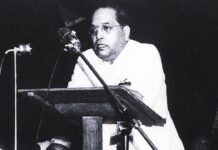Sailendra Pattnayak
Sri Aurobindo was taken by his father to England in 1879 for studies when he was hardly seven years old with an explicit intention that he remains away from everything ‘native’- people, language, culture. As a teenager he entered Cambridge and studied Homer, Aeschylus, Sophocles, Sappho in original Greek. He also read Virgil in original and stood first in Greek and Latin. He spoke very good French and read German.
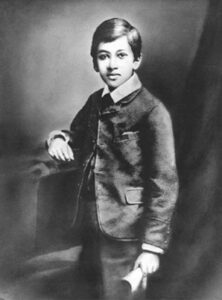
The Ancients and the Vedas:
Those ancient Greeks must have re-awakened in him an ancient mystery for later when he took residence in Pondicherry to do Yoga, he would re-discover in Vedas, particularly in Rik-Veda that the Rishis had indeed ‘seen’ and ‘heard’ the Riks or the mantras and had practiced the transformational power inherent in them. Thus, internal vision, inner experience and identity with supra-cosmic were the three successive movements of the Vedic Rishis.
With his two books “The Secretes of the Vedas” and “Hymns to Mystic Fire” he established that both, the classical Indian point of view and the modern European Indologists, from Max Muller onwards, have been erroneously presenting the Vedic hymns as naturalistic polytheism and the source of a pervasive ritualistic religion.
Indian Majlis in Cambridge and How to Fail in I.C.S.:
Being such a bright student, Sri Aurobindo was at one and the same time, in probation for the Indian Civil Service and scholar at Cambridge.
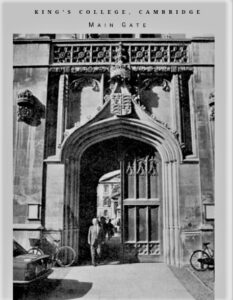
In Cambridge he became interested in Indian situation and became aware that not to become another I.C.S. but regeneration of inherent glory of India was the objective of his life. His speeches in the ‘Indian Majlis’ in Cambridge alerted the authorities about him. After qualifying in I.C.S. examination he finally decided not to appear for horse riding test and disqualify. He was given the second chance but he did not appear and was rejected. A rejection that was to change the course of history.
Returning back to India:
On 12th January 1893, the thirtieth birth anniversary of Swami Vivekananda, the mail boat ‘Carthage’ set sail for India with Sri Aurobindo on board. On 6th February, after fourteen years he set foot on Indian soil. “A vast calm descended upon him at the moment he stepped first on Indian soil… this calm surrounded him and remained for long months afterwards.”
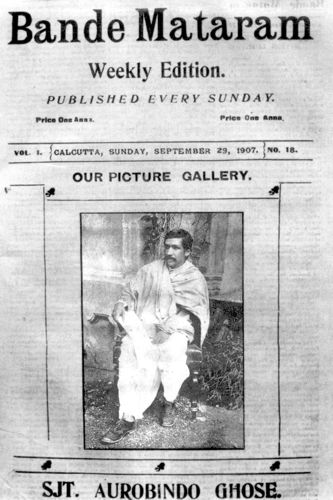
A few days after, on 18th February 1893 he joined the Baroda State Service and served the state in various capacities from administration to teaching French and English in Baroda College until 1905. The many directions of life in which he will achieve perfection and move beyond were to begin in Baroda itself.
Soon after settling down in Baroda, Sri Aurobindo began to learn and master Bengali and Sanskrit. In Baroda only he began the great journey in poetry, publication of such major works as ‘Myrtilla’, ‘Urvasie’, ‘Love and Death’ and a number of short poems. Even his life-long work the great epic poem ‘Savitri’ of 23,837 lines, which in its complete form was published only after Sri Aurobindo’s passing, a preliminary draft was completed in Baroda itself.

The Poet and the Poetry:
In a different context Sri Aurobindohas said that, “Vision is the characteristic power of the poet, as is discriminative thought the essential gift of the philosopher…” But both the vision and discriminative thought in their highest is to be found in the ‘Savitri – A Legend and a Symbol’. The legend is from the Mahabharat; the symbol – “from death lead me to immortality”, the famous aspiration of the seer of the Upanishad. ‘Savitri’ takes up the same and brings out all the necessary conditions for the realization of immortality in life. ‘Savitri’ not only affirms the birth of a new Power, the Power of the Divine Grace, which alone can save man from the reign of Ignorance which is Death, but shares the real experience of the journey through multiple worlds—both nether and higher, which although remains unknown to humans but nevertheless acts upon human consciousness and controls their destinies. As an epic ‘Savitri’ “transmits the living Reality to the furthest bound of speech.”
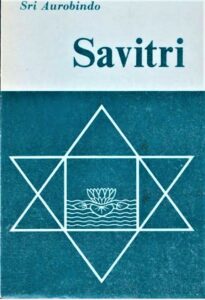
Laying-down the Foundations of Indian Independence:
Sri Aurobindo’s articles on various aspects of Indian situation in the ‘Indu Prakash’ published from Bombay attracted Lokamanya Tilaks’s attention and their meetings during 1901 and 1902 proved as decisive to Indian Independent Movement. For the first time in history concepts like ‘Swadesh’ and ‘Swadeshi‘caught hold of the imaginations of the Indians. As a professor Sri Aurobindo inspired his students in such ways that most of them dedicated themselves as workers of Lokamanya Tilak.

In October 1905 with the Bengal Partition, the decisiveness in Indian Freedom Movement took shape. Sri Aurobindo’s pamphlets such as; “No Compromise’ and ‘Bhawani Mandir’ created nation-wide stir. On 19th February 1906, Sri Aurobindo took with-out-pay-privilege-leave of one-year and came to Bengal. Same year in August under his leadership opens the Bengal National College and commences the publication of the fortnightly ‘Bande Mataram’ in English.
Two long articles of Sri Aurobindo, upon which M.K. Gandhi would be deciding his strategies of peaceful movements, ‘The Doctrine of Passive Resistance’ was published serially in ‘Bande Mataram’ in April-May 1907 and ‘Boycott’ was ceased by police just before publication.
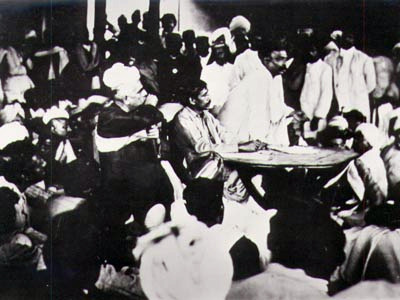
1907 in many ways proved to be decisive for Indian freedom movement. The annual convention of the Indian National Congress was held in December 1907 at Surat. President Surendranath Banerjee and other leaders known as ‘moderates’ were asking for the ‘permanent British rule for India’. In parallel the ‘Nationalist Group’ came together with Sri Aurobindo as their president and declared Lokamanya Tilak as their leader who on the Congress platform for the first-time in history asked for the complete freedom of India.
“India has Decided to Win Freedom”:
In December, 1918 a young revolutionary from Gujarat, A.B. Purani, reaches Pondicherry seeking Sri Aurobindo’s permission to initiate their revolutionary plan against British rule for which they were preparing themselves since many years.
“…but if India can be free without revolutionary activity, why should you execute the plan?”, Sri Aurobindo with his calm voice and demure surprises him; but assures him saying that, “India has already decided to win freedom and there will certainly be found leaders and men to work for that goal. But all are not called to Yoga. So, when you have the call, is it not better to concentrate upon it?”
By December 1918, already fifty issues of the ‘Arya’ (the first issue had come out in August 1914) had reached the readers. And in ‘Arya’ most of the major works of Sri Aurobindo – ‘The Synthesis of Yoga’, ‘The Essays on the Gita’, ‘The Secret of the Veda’, ‘The Human Cycle’, War and Self-Determination’, ‘The Ideal of Human Unity’ and also the great philosophical synthesis, his magnum-opus ‘The Life Divine’; more than three-fourths of each of them, were published in serial forms.
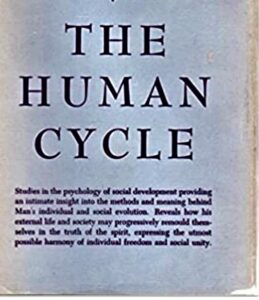
SriAurpbindo was arrested in Alipore Bomb Case on 2nd May 1908 and due to lack of evidence was released after one year on 6th May 1909. After the release along with his regular political work and editing of The Bande Mataram he also took the charge of the Bengali daily news paper ‘Navashakti’. But for Lord Minto, the Viceroy of India – “Arabindo was the most dangerous man with whom we had deal.” So the British police was hell-bent to gather enough evidence to at least deport him out of India. While in Alipore Jail in his practice of Yoga he had reached certain decisive point. Following an ‘Adesh’ from the ‘Unseen’ on the evening of 31st March 1910 Sri Aurobindo simply walked out of the ‘Karmayogin office and the police missed him by less than one hour. By giving a slip to British spy and police he reached Pondicherry which was under French rule on 4th April 1910.
Not ‘Man-Making’ but ‘Divine-Man-Making’:
About “Arya” Sri Aurobindo had told: “Our idea was the thinking out a synthetic philosophy which might be contribution to the thought of the new age that is coming upon us. We start from the idea that humanity is moving to a great change of its life which will even lead to a new life of the human race… In the “Arya” I state the thought upon which this new evolution will be based as I see it, and the method of Yoga by which it can be accomplished.”
The Disciple as the Witness to Truth:
A.B. Purani never left Pondicherry and followed diligently Sri Aurobindo’s Integral Yoga. Nevertheless he used to again and again ask about India’s Freedom and about her future to which the Master never was tired to answer. As Sri Aurobindo had assured him, India gained Independence in the peace-full way and to the great happiness of the disciple, on the Master’s Birth-Day. In 1935 answering to a question he had written to him that – India’s freedom “is all settled”; but the great question that remains: “What is India going to do with her Independence?… Bolshevism? Goonda-Raj? Things look ominous.” And after seventy-four years we have to agree that of India this too has come true.
The Greatest Evolutionary Philosopher:
All reality is consciousness; Sri Aurobindo insistently establishes that the measure of reality of anything is determined by the nature of consciousness that is revealed in it.
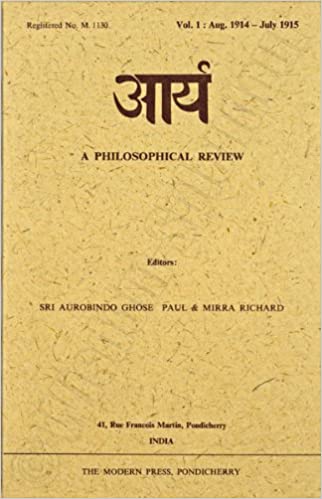
In Sri Aurobindo’s philosophy evolution is the pivot round which his entire philosophical thought move. Evolution is the movement that is the reverse of involution. Because of the descent or involution of the Spirit into matter, the lowest particle of matter, creation has come to happen. So, naturally, the reverse journey or the evolution is from the lowest to the highest. The journey is the journey of the consciousness in stages.
The mechanistic view of evolution of Darwin has been thoroughly refuted by eminent philosophers of West from Hegel to Whitehead. For Hegel pure rational thought is the objective of the evolution. In our time Whitehead went further to identify creativity as the inner spring of the process of evolution.
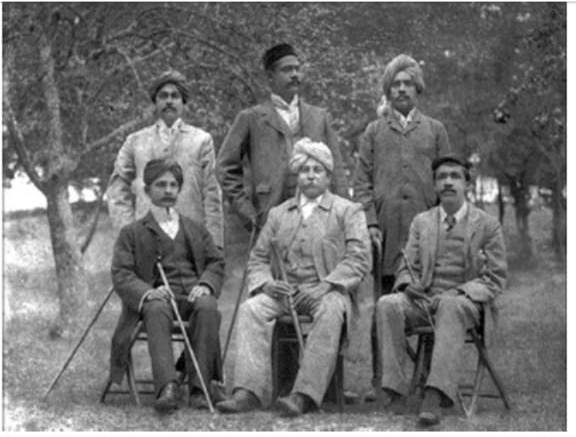
For Sri Aurobindo, thought is not the Ultimate Reality, but there are various grades of Reality above thought which have to be climbed before the Ultimate Reality is reached. Similarly, the dynamic element in evolution does not come merely from urge of creativity in nature. The creation, the universe has originated from Satchitananda, so, its goal is the complete realization of Satchitananda. This is how the process of evolution is not bound within the limits of nature or any such finite; rather beyond all the finite it reaches the infinite.
Accordingly, at the center of his great philosophical synthesis ‘The Life Divine’ we find that simple but greatly powerful declaration – ‘MAN IS A TRANSITIONAL BEING’.
To understand and move beyond all the shades and controls of human ego and allow the psychic presence in the deep recesses of our heart to appear on the forefront of our being and lead our lives has been the singular call of the Integral Yoga of Sri Aurobindo.
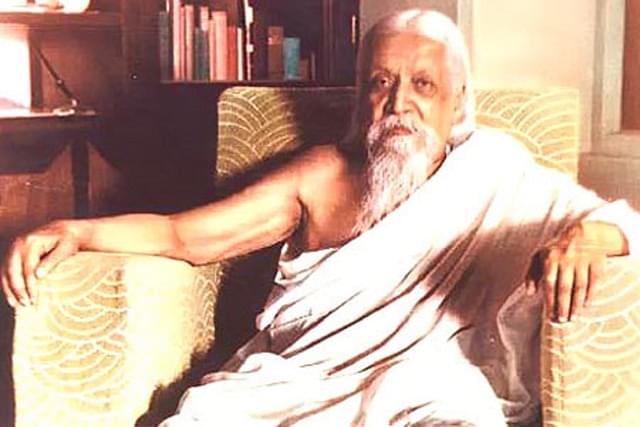
But during last fifty years with the advent and prorogation of Information Technology vis-à-vis to consumerist life-style man in general has been becoming obnoxiously superficial and short-sighted. Exploitation of Nature which was continuing since last two hundred years of industrialization, and during last fifty years became such common place that it has brought humanity to the brink of a collective catastrophe.
Paradoxically, exactly one hundred years after the calling off of the publication of the “Arya” (January 1921) in which the ultimate sentence regarding the future of humanity – ‘Man is a transitional being’ – was declared, the Report of the ‘ Inter-Governmental Panel of Climate Change’ has come out on 9th August 2021 with graphic details of our earth that is already in the process of an apocalyptic situation and a bleak picture of future of man; whether man has any time left to consider his own ‘transitional’ nature seems to be the most urgent question.
(The author is a Poet, Spiritualist and Development Professional)






















